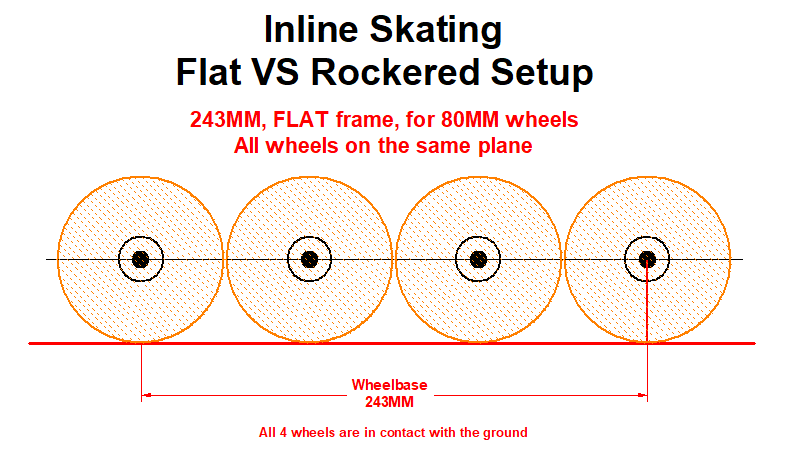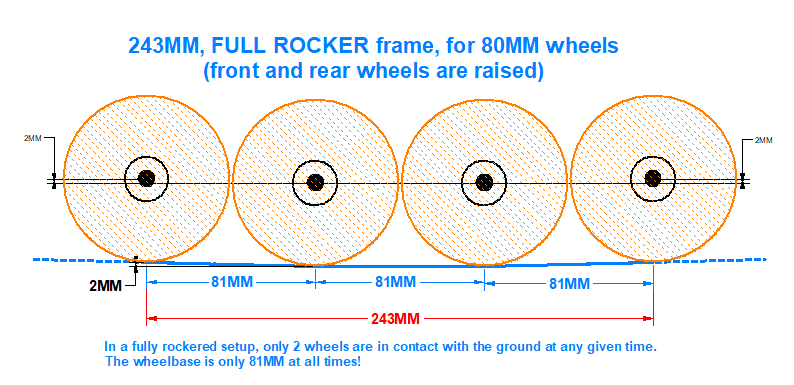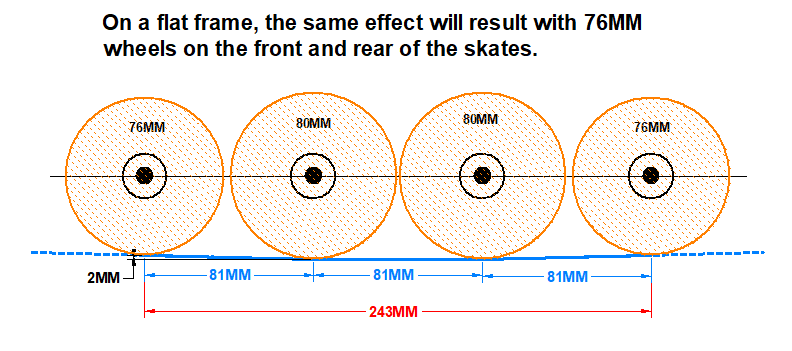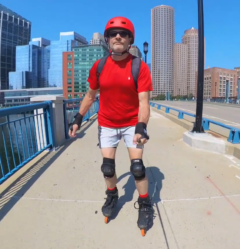My skates are “rockered” (banana rocker), meaning, my wheels are not on the same plane. (as opposed to the standard “flat” setup)
The two inside wheels are lower than the front and rear wheels (by 2mm), meaning, at any given time during normal skating, only two wheels of each skate are in contact with the ground, (my effective wheel base is 81MM, where it would be 243 MM on a flat frame!) which is good for hockey/slalom/freestyle skating. (The skating I enjoy)
But this comes at the expense of speed, and stability.
For me to keep up with, say, the skaters in a SkateBoston group skate, I have to work harder to keep up with them (which I do, and enjoy very much), and also, I must be very careful on high speed down hills, because above a certain speed, it takes very little to lose control.



There are many ways to configure skates to be rockered, including by using different size wheels, a very common method, which I still use today on certain frames.
Helpful Information:
The following, are quotes are from “punkassjim”, in a great post on Reddit, who does an excellent job explaining the rockered setup.
Thanks, Jim, for nailing my thoughts on this setup perfectly.
Banana rocker just requires development of different muscles for control.
After building up all the basic skills, and the requisite muscle groups — switching to rockered felt like a gift from the gods
Hills can be a bit squirrelly, but again, if you build up the attendant muscle groups, you can exert a certain level of control that is otherwise lacking due to the extremely short (functional) wheelbase.
It takes a lot of time and practice. But otherwise, rockered is phenomenal for urban skating.
If you’re gonna be urban skating, the entire name of the game is to be light on your feet, to always be shifting your weight to one skate or the other, and keeping the less-load-bearing leg at the ready to take over if the planted foot gets snagged on a crack. It may sound like a lot to keep track of, but in reality is just a natural thing your body learns to do over time, whether you realize it or not.
Always be ready to shift your weight. Sometimes that means scissoring your legs and putting more weight on the back foot, sometimes means just skating on one foot, keeping the other at the ready to switch to, if you get tripped up.
punkassjim
See also:
Are rockered frames right for me? (links to a different site)
Rockering (links to a different site)
What Are ROCKERED Inline Skates? (By Tiago)
